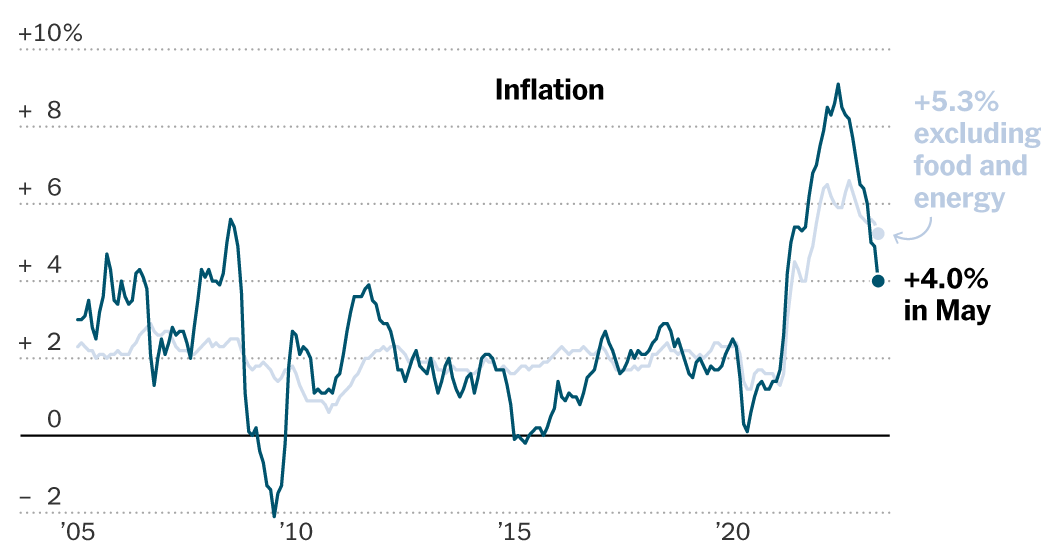Restaurant Workers With Narcan Are on the Front Lines of the Opioid Epidemic
Kevin Foehrkolb was tending bar on a routine Saturday night last September at Kent House Irish Pub in Towson, Md., when he heard a commotion from the corner booth where a group of regular customers were playing the card game Magic: The Gathering.
“They were the type to drink beer, not get rowdy or do shots,” he said.
When he ran over, he saw that one man’s face had turned yellow and his eyes had rolled back in his head. He was overdosing.
From behind the bar, Mr. Foehrkolb grabbed Narcan — a nasal-spray version of naloxone, a drug that reverses opioid overdose — then tilted the man’s head back and pushed the plunger to release the dose. The customer woke up and was taken to the hospital. Mr. Foehrkolb, still jarred from the experience, returned to his shift.
“I thought it would be something that happens at the club next door,” he said. “Not so much at a quiet place where people are just playing games in a corner, casually drinking.”
As the opioid crisis in the United States continues to worsen — deaths from such drugs more than doubled, to 105,000 from January 2015 to January 2023, according to federal data — overdoses are now happening with regularity in or around social spaces like restaurants and bars. City officials and nonprofit organizations are working to get Narcan, which became available over the counter in March, to those businesses where it can be immediately useful.
The jobs of service workers like Mr. Foehrkolb now include reversing an overdose.
To some in the business, keeping Narcan on hand seems an obvious move — like stocking any other first-aid supplies, said Jed Thompson, the general manager of Mean Eyed Cat, a bar in Austin, Texas. But many others feel daunted by joining the front lines of yet another health crisis, after a pandemic they spent verifying vaccine cards and enforcing mask-wearing.
“It shouldn’t be on these bartenders making no money,” said Ryan Purdy, who works at a Philadelphia brewery that stocks Narcan. “It should be on someone trained for it, who is expected to save lives.”
Much of spike in overdose deaths is due to fentanyl, a synthetic opioid that can be easily combined with recreational drugs like cocaine without the user’s knowledge. Even in minute amounts, fentanyl can be lethal. In New York City, fentanyl was present in 80 percent of overdose deaths in 2021, according to the city’s health department. And in Maryland, where Mr. Foehrkolb works, the state’s Opioid Operational Command Center reported that the drug killed 2,310 people from March 2022 to March 2023, about 16 times as many as heroin.
The results are already evident in the hospitality business. Last year, when Shreeta Waldon, the executive director of the nonprofit organization the Kentucky Harm Reduction Coalition, looked at the Louisville ZIP codes where calls to emergency services were made about overdoses, almost all were in neighborhoods filled with bars, she said.
She regularly visits restaurants and bars to pass out Narcan and train staff on its use, reassuring them that if someone is not overdosing, the spray won’t do any harm.
Owners often resist stocking Narcan, thinking that it will invite drug use, she said. At the same time, the workers she is training frequently pull her aside and ask to have a dose for themselves, either to treat someone they come across or in case of their own overdose. (Historically, the restaurant business has had high rates of substance abuse.)
“Our goal is to normalize it, and make it as much a part of our normal life as possible,” Ms. Waldon said.
Restaurants can play a big role in that normalization, said Dr. Michael L. Barnett, an associate professor at Harvard University’s T.H. Chan School of Public Health.
“Everyone goes to restaurants or bars, and that raises the awareness of that problem,” said Dr. Barnett. He compared restaurants keeping Narcan on hand to the coffee shops that stopped using plastic straws, helping to shift public opinion against their use. “The effects of that can be hard to measure for a while, but I think they add up to something important.”
Restaurants and bars are also public places that anyone can visit, said Max Moreland, an owner of FBR Management, which operates several bars in Austin that stock Narcan. Overdoses occur in other settings, he said, but “they can’t put Narcan in everybody’s house.”
Noël Swain, the manager of Kent House, said that at bars, “there’s a feeling of community and social responsibility.”
The accessible nature of these spaces is especially important for marginalized groups like L.G.B.T.Q. people and racial minorities, who are disproportionately affected by the spread of fentanyl and may feel most comfortable picking up an emergency supply of Narcan at a bar, said Kochina Rude (whose legal name is Cary Escovedo), a drag queen who conducts Narcan training as part of a weekly drag show at the Oasis nightclub in San Francisco.
“Nightclubs, restaurants, bars and hospitality venues are community spaces that can empower underserved communities that might face medical discrimination,” she said. “Even though that’s not necessarily what they’ve signed up to do, working in the nightlife industry, that’s the de facto of what ends up happening.”
Ms. Rude receives her Narcan supply from the city’s Drug Overdose Prevention and Education (DOPE) Project, which distributed more than 84,000 doses of naloxone from July 2022 to June 2023. Others have received free Narcan from local nonprofit organizations and city public health departments, or as part of settlement deals with opioid manufacturers.
And the drug isn’t just staying parked behind a bar — it’s being used. According to the DOPE Project’s data, its naloxone was used in 8,765 overdose reversals in San Francisco during that same time period.
In Portland, Ore., where Mauricio Sanchez is a barista, similar scenarios are playing out. Two months ago, he had just finished serving a drink at Deadstock Coffee, when he stepped outside and saw a man collapsed nearby, surrounded by people who said the man had overdosed.
Mr. Sanchez grabbed the Narcan in Deadstock’s storage lockers and gave two doses to the man, who regained consciousness.
Mr. Sanchez was grateful that the shop had Narcan. But in a place like Portland, where opioid use has become endemic, he said government agencies weren’t taking enough responsibility for the problem. “They are expecting small businesses to look out for these people and help,” he said. “It feels like that is unfair.”
Officials in some cities said that giving Narcan to restaurants is not meant to shift government duties onto workers.
“We are not saying it is the responsibility of the restaurant staff to take this on alone,” said Deepa Avula, the executive deputy commissioner of the New York City Department of Health and Mental Hygiene. “But recognizing that this problem is prevalent in our city, we need to give individuals tools to help address the problem.”
And some workers said their service experience made them distinctly qualified to respond to an overdose.
“Bartenders and hospitality workers thrive on constantly having our eyes on 10 things at once and making sure someone hasn’t been over-served,” said Bridget Murphy, a co-owner of the worker-owned pizza shop Extra Extra in Buffalo, N.Y., which keeps Narcan with its medical supplies.
Some of Ms. Murphy’s friends in the restaurant business told her they couldn’t understand why a pizzeria would carry Narcan. “I think in the same way where you can just go anywhere and ask if they have ibuprofen, you should also have Narcan in those spaces,” she said.
But ibuprofen doesn’t carry the stigma that Narcan does. In the summer of 2021, a man overdosed while having a drink outside Donnybrook, a bar on the Lower East Side of Manhattan. Maria Christenson, a manager, sprayed Narcan up his nose, reviving him.
Yet even since the overdose incident, Meghan Joye, who runs Donnybrook, said she has hesitated to tell patrons that she has Narcan. “I didn’t want to be viewed as a safe place to do drugs,” she said.
Kasey Anderson, the director of development and community engagement at the Alano Club, a recovery center in Portland, has heard this argument from bar owners many times. “You have a fire extinguisher on hand,” she said. “Does it invite someone to commit arson?”
Being prepared to use Narcan is just part of having a service job, said Ellen Wirshup, a bartender who started Project Red, a Portland nonprofit that gives out Narcan.
“We are already put in that role where we are providing service, providing care for other people,” she said.
Follow New York Times Cooking on Instagram, Facebook, YouTube, TikTok and Pinterest. Get regular updates from New York Times Cooking, with recipe suggestions, cooking tips and shopping advice.


